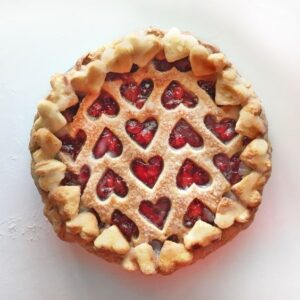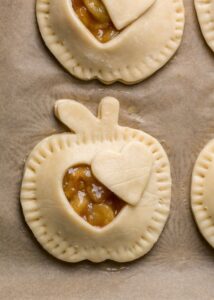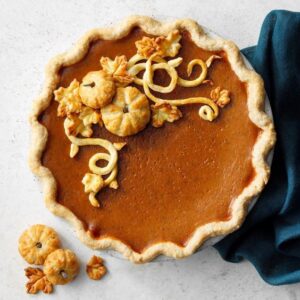Mastering the perfect pie crust: Techniques and Troubleshooting
Mastering the perfect pie crust have a way of intimidating even the most seasoned bakers, but fear not! With the right techniques and a dash of confidence, you can master the art of the perfect pie crust.
Whether you’re planning to bake a savory quiche or a sweet fruit-filled masterpiece, here’s your guide to achieving crust perfection in no time.
Even if you are a beginner this guide is for you.(For more beginners guide go to our blog)

- The Chill Factor:
The secret to flaky, tender crusts lies in keeping your ingredients and equipment cold. Start by using cold butter or shortening, and even chill your flour. When mixing your dough, ice water is your best friend. Cold ingredients help create those sought-after layers in your crust.
- Minimal Mixing:
Overworking the dough can lead to a tough, rather than tender, crust. Mix your ingredients just until they come together; a few visible butter or shortening specks are perfectly fine. Less is more when it comes to handling the dough.

- The Perfect Fat-to-Flour Ratio:
Achieving the right ratio of fat to flour is crucial. A common rule of thumb is 1 part fat to 2 parts flour. Experiment with different fats like butter, shortening, or lard to find your preferred flavor and texture.
- Liquid Love:
The key to binding the dough is the liquid. Ice-cold water is typically used, but some bakers swear by using vodka for an even flakier crust. Vodka doesn’t develop gluten like water does, so your crust stays tender.
- Rest and Relax:
After you’ve mixed your dough, let it rest in the fridge for at least 30 minutes. This allows the gluten to relax and the fats to solidify, making the dough easier to roll out and less likely to shrink during baking.

Troubleshooting:
- Shrinkage:
If your crust shrinks in the oven, chances are it was stretched while being placed in the pie dish. Handle the dough gently and avoid stretching it when transferring it to the dish.
- Soggy Bottom:
Preventing a soggy bottom crust is a challenge. One trick is to brush the crust with a thin layer of beaten egg white before filling it. Another option is to blind-bake the crust (bake it empty before filling) to set it and create a barrier against moisture.
- Cracking Edges:
If your pie crust edges crack, patch them with a bit of extra dough and press gently to seal. To avoid this, make sure your dough is evenly rolled and not too thin at the edges.

- Tough Texture:
If your crust turns out tough, it’s usually due to overworking the dough. Remember to handle it as little as possible, and use ice-cold ingredients.
In Conclusion:
Mastering the perfect pie crust is a skill that takes practice, but with these techniques and troubleshooting tips in your baking arsenal, you’re well on your way to creating flaky, tender, and utterly delicious pie crusts. So go ahead, embrace the challenge, and let your pie-making prowess shine. Your friends and family will thank you with every heavenly bite. Happy baking!
